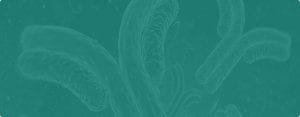What it means when you get multiple bands on your western blot
You’ve run the blot. Now it sits in front of you, and looks more like a barcode than the clean single band you’d expected.
This can be a troublesome issue to resolve, as it’s not always the blotting technique or procedure itself that’s the problem. To help you figure it out we’ve prepared a few more Western Blot hints and tips.
As we always recommend, it’s best to start with fresh reagents and buffers where possible if you need to repeat anything, just to ensure there’s no contamination and that everything has been prepared correctly.
Cell Lines
High passage number cells can accumulate differences in their expression profiles, so try to use less-frequently or non-passaged cells.
Post-translational modifications
Acetylation, methylation, phosphorylation, glycosylation…
All of these ‘ations’, the modified forms of a protein, can cause extra bands. Double check if the protein you’re interested in has modified forms like these. If so, it may be possible to strip them off in your sample preparation, ensuring your protein runs as expected.
Overloaded gel
Too much protein in a lane can cause ‘ghostbands’ to appear. Double check the protein concentration of your sample. For membrane, nuclear and cell lysates aim for about 20-30 µg/well. For purified proteins, 10-100 ng should be about right.
Are the bands at a lower molecular weight than expected?
Depending on your sample type, and how it was prepared, your protein could have been digested. Protease inhibitors are the solution here.
Multimers
If you’re protein forms multimers, then boiling in Laemmi buffer for 5-10 minutes could disrupt them and clean up multiple bands. Usually you’d only expect to see only a few extra bands.
Stuff we didn’t know was there…
Less likely, but it could actually be a novel protein, or splice variant, with similar epitopes. A
BLAST search or dig through the literature may help reveal if this is the case.
Non-specific bands
- Primary antibody concentration too high – try a lower concentration
- Try a new primary antibody
- Blocking – try boosting the concentration of your blocking reagent, e.g. from 2-5% BSA, increasing blocking incubation times, preparing the primary antibody in the blocking buffer, and/or adding Tween-20 (0.05%) to your blocking buffer (if not already in)
SDS
- SDS may cause non-specific antibody binding, so be sure to wash blots after transfer, and ensure no SDS is used in the detection procedures.
We hope this gives you some help in tracking down the source of multiple bands.
Download PDF :  Filed Under : Antibodies
Tagged With : Western Blot
Filed Under : Antibodies
Tagged With : Western Blot

 Filed Under : Antibodies
Filed Under : Antibodies


